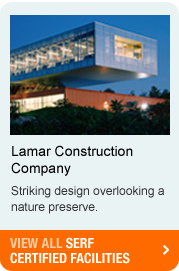In this blog series, Colin W. Maguire, JD, SP, recounts his research of the legal article The Imposing Specter of Municipal Liability for the Exclusive Promotion of Green Building Certification Systems, 1 University of Baltimore Journal of Land & Development 157 (2012).
I am the newly-minted, youngest member of the City of Lansing (Michigan) Planning Board going through our final edits to our new Master Plan. This process only happens every seven years and involves a lot of time and energy. While most of a Planning Board’s time is spent in a quasi-judicial function, this is the one time the Board acts more like a legislative body.
Despite my relative youth and inexperience, one provision of the proposed plan struck me as particularly egregious.. This section proposed that the City of Lansing would incent buildings to be green-certified using only the USGBC’s LEED standard.
I, along with the other members of the Board, was shocked by the initial research results. In a small three-page memo, I was able to prove the folly of this potential action and the liability the City of Lansing may open itself up to as a result of enacting a related ordinance. Was I the only person in the world critical of LEED-exclusive ordinances and statutes? No, there were many rumblings in the business community. There was even a case out of New Mexico: The Air Conditioning, Heating, and Refrigeration Institute v. City of Albuquerque where a LEED-exclusive statute was challenged.
Professor Sarah Schindler correctly noted that the problem was not necessarily LEED-specific, but that a growing number of private green building certifications were trying to impose their criteria through public laws. She argued that this was legally suspect and almost certainly not beneficial for the diversified climates we live in across the U.S. Attorney Sarah Fox pointed out the obvious in an article – isn’t this really illegal? Yet, she had largely left the issue there. Both scholars were eager for me to continue this thought process using a more thorough analysis of the municipal liability incurred by passing a law that mandates exclusive, private green building certification,
The result is publication as The Imposing Specter of Municipal Liability for the Exclusive Promotion of Green Building Certification Systems, 1 University of Baltimore Journal of Land & Development 157 (2012). The article asserts there are two broad reasons why municipalities cannot exclusively promote or mandate a single green building certification in an ordinance or functionally. First, most state laws prohibit such actions. Second, even if the state law allowed such an ordinance or action, the U.S. Constitution prohibits the ordinance.
Part 1 of a 6-part blog series to be continued.
 Get on your way to green.
Get on your way to green.
